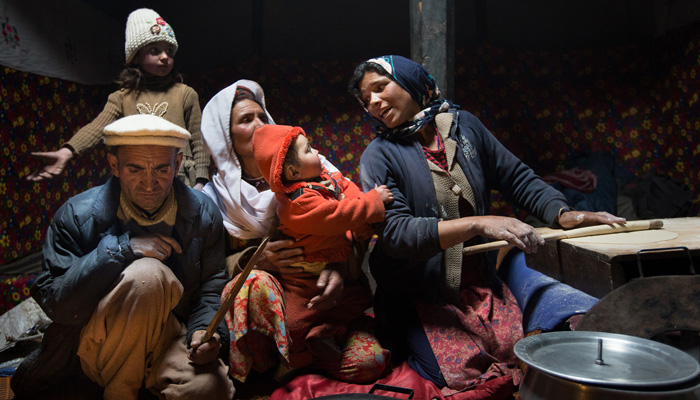The pain of Dardistan
Being on the periphery, these communities are marginalized, left behind and forgotten
Borderline communities are badly affected when new empires and states are made. New borders while making new national states often divide these communities, even families and clans. These newly formed borders also change the traditional routes of contact between people, compelling people of the borders to migrate and scatter.
This has happened to the people of a region at the crossroads of South and Central Asia, a major part of which falls inside Pakistan’s borders. This region made of the valleys of the lofty mountains of the Hindukush, Karakoram and Himalaya, which was also known as Dardistan – the land of the Dardic communities of the Indo-Aryan breed – has been one of the worst victims of the many waves of colonization right from the time of Alexander the Great to the onslaught of the Mahmood of Ghazni, the expanding of the Mughal empire and, later by the British intrusion into the areas through the kings in Kabul or the invaders from Afghanistan and Central Asia during the 16th century and onwards till the partition of 1947.
The greater part of Dardistan is now inside the international and disputed borders of Pakistan, with Afghanistan to the west and India to the northeast. This part I usually refer to as northern Pakistan as the major spurs of the three great ranges, Hindukush, Himalaya and Karakoram, are administered by Pakistan. Parts of the Buddhist civilization centre, Gandhara, also lie in this region with Swat and Darel in Diamer, Gilgit-Baltistan, as centres.
We know very little about what Alexander did to the people of this area except for excerpts and observations made by Greek historians and geographers like Herodotus, Strabo, Ptolemy and the Roman Pliny. Alexander came from Afghanistan to Chitral and Swat and crossed the Indus to go to the plains of the valley. By that time the Buddhist religion was practised in the southern parts of this country. Alexander’s armies crushed the local kingdoms here.
In the 11th century, Mahmood of Ghazni of the Turkic descent invaded this part from the Afghanistan side. His army invaded Swat and dethroned the last kingdom of the local people, probably of the Dard descent. His furious onslaught on the region has left many marks and paved the way for future intrusion during the days of the Mughals in the 16th century and onwards. Mahmood’s attack on Swat not only killed large numbers of the local populace but also scattered many into the mountains further north.
In the 16th century when the Mughals, especially Babur, were trying to consolidate their dynasty they apprehended the ‘Kafirs’ (the pagans) of this region, and for control over them instigated and supported the Yousafzai khanates in the valleys of Peshawar and Charsada – the samah (plain) region – to intrude into the kohsar (hilly region) – the Swat valley. Babur’s interest in Swat was also prompted by his intention to bring Kashmir under his empire.
During this period the indigenous populations of Swat were either murdered or driven away from Swat. Their lands were seized, culture demolished, and they were converted. The Islamization and domestication of these mountain communities started in the 16th century. The most ferocious period of this domestication was brought by the king of Afghanistan, Emir Abdul Rahman, in 1890s when the Kafirs of Kafiristan were forcefully converted in northwest Afghanistan in what is now called Nuristan. Many were killed and a large number fled to Chitral which was under the British Raj. These fugitives were among the forefathers of the present-day Kalash community, a community of hardly 4000 persons living in southern Chitral that still adheres to their ancient faith and culture.
Swat was afterwards in a state of local political management units under the powerful Yousafzai chiefs. This period in Swat is usually known as Yaghistan, acephalous affairs. One religious man of Swat, Akhund Abdul Ghaffur, alias Saidu Baba, got influence in Swat in the nineteenth century. He is also known as the founding emir of the Yousafzai State of Swat which persisted till its merger with Pakistan in 1969.
During this period, from the 16th century till its accession to Pakistan in August 1947, Chitral was ruled by the Kator dynasty which was not totally independent, first influenced by the kings in Afghanistan and later by the British. Gilgit region had its ancient princely states in the Gilgit, Hunza, Nagar and Baltistan which were given under the Dogra, the Maharaja of Kashmir, by the British colonizers in 1848 under the Amritsar Treaty.
There were three princely states namely Swat, Dir and Chitral in today’s Malakand division; and the Gilgit region and its princely states were under the Maharaja of Kashmir. When Partition took place these three states were under the suzerainty of the British India, and they decided to join Pakistan whereas the Maharaja of Kashmir decided to join India which aroused a kind of mutiny in Gilgit-Baltistan where the people got rid of the Maharaja; and on November 14, 1947 Gilgit declared its accession to the state of Pakistan.
This region, North Pakistan, is well known because of its highest peaks, beautiful valleys, and touristic destinations but its people, cultures and languages are the least known in Pakistan and abroad. People only know the political nature of the region of Gilgit-Baltistan but what is unknown to many is its peculiar ethnology and history.
The bulk of research on these people has been done by foreigners; and is in English, German or Russian. The oral traditions in the region are a source of indigenous wisdom, history and memory. The stories around the 1947 partition from this region are interesting, and painful, too. The people of the three princely states usually referred to people from Punjab as Pakistanis. Many men and families from this region were in the cities on the Pakistani as well as on the Indian side Partition occurred; and the majority of the people from these areas were left in India away from their loved ones with their houses, property and families left on the Pakistani side. Similarly, villages in Gilgit-Baltistan and in the Kargil area were divided by the Line of Control. This divide has also divided families in two countries and, owing to the continued conflict between Pakistan and India, members of the same family are permanently away from each other.
Being on the periphery, these communities are marginalized, left behind and forgotten. Their voices are not heard and they live a life where they face crises of identity, social and political exclusion. They are now the victims of internal colonization and are caught in between the crossfire of contesting and hateful narratives of state nationalism. They have experienced much and gone through painful times because of the partition but these facts are not considered worth mentioning in Pakistan, and in India.
The writer heads an independent organisation dealing with education and development in Swat. He can be reached at: ztorwali@gmail.com
-
 Andrew Lands In Fresh Major Trouble After Princess Eugenie Left Him 'devastated'
Andrew Lands In Fresh Major Trouble After Princess Eugenie Left Him 'devastated' -
 Colleen Hoover Shares Major Update About Cancer Treatement
Colleen Hoover Shares Major Update About Cancer Treatement -
 UK Starmer Rules Out US Trade War, Calls For ‘calm Diplomacy’ Over Greenland
UK Starmer Rules Out US Trade War, Calls For ‘calm Diplomacy’ Over Greenland -
 Billy Bob Thornton Clears The Air About His Exit From 'Landman'
Billy Bob Thornton Clears The Air About His Exit From 'Landman' -
 DC Boss Gets Honest About Two New 'Batman' Films
DC Boss Gets Honest About Two New 'Batman' Films -
 Prince Harry Feels Sidelined By Meghan Markle As He Searches For Clearer Direction
Prince Harry Feels Sidelined By Meghan Markle As He Searches For Clearer Direction -
 Meghan Markle Warned About 'risky Move' As Prince Harry Arrives In Britain
Meghan Markle Warned About 'risky Move' As Prince Harry Arrives In Britain -
 Why Ashton Kutcher Is Still Talking About Whether He Showers
Why Ashton Kutcher Is Still Talking About Whether He Showers -
 IMF’s World Economic Outlook: ‘Resilient’ 2026 Growth Expected Amid Tariffs & AI Boom
IMF’s World Economic Outlook: ‘Resilient’ 2026 Growth Expected Amid Tariffs & AI Boom -
 Find Out Early Subtle Signs That You Might Have Parkinson's Disease
Find Out Early Subtle Signs That You Might Have Parkinson's Disease -
 Prince Harry Appears In High Spirit, Greets Supporters At London High Court
Prince Harry Appears In High Spirit, Greets Supporters At London High Court -
 Kate Middleton, Prince William Left 'frustrated' For THIS Major Reason
Kate Middleton, Prince William Left 'frustrated' For THIS Major Reason -
 Robert Irwin Reveals Relationship Status After 'DWTS' Romance Rumors
Robert Irwin Reveals Relationship Status After 'DWTS' Romance Rumors -
 Relieve Eczema Symptoms This Winter With Simple Steps
Relieve Eczema Symptoms This Winter With Simple Steps -
 Prince Harry Faces Marital Tensions As King Charles Offers Olive Branch
Prince Harry Faces Marital Tensions As King Charles Offers Olive Branch -
 South Korea, Italy Strengthen Ties To Bolster AI Technology, Business, Defence Cooperation
South Korea, Italy Strengthen Ties To Bolster AI Technology, Business, Defence Cooperation




